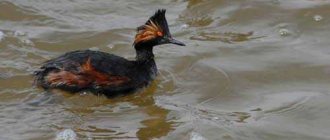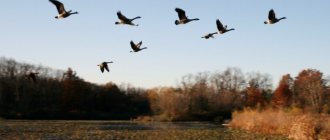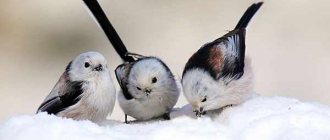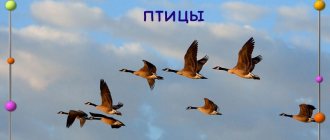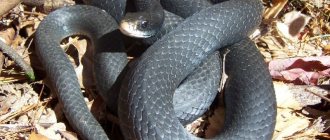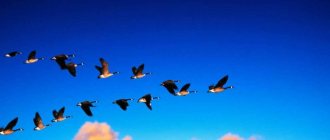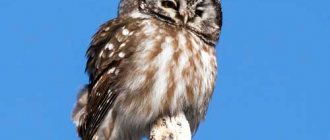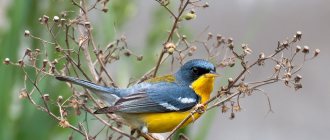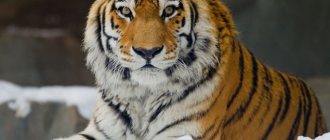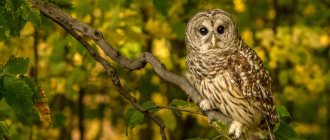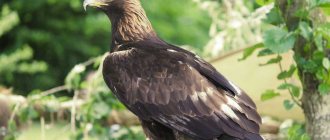The fauna of the Earth is extremely diverse and never ceases to amaze and amaze the imagination even in our age of total urbanization. Every year, up to a hundred species of different animals disappear irrevocably on the planet. Birds are no exception, and today there are more than 50 species of birds in the world that are on the verge of extinction. Recent research by ornithologists has revealed the rarest birds in the world, which are almost impossible to see. They have an extraordinary appearance and attractive beauty.
The rarest birds on Earth
| N | Bird | Area | Status in the Red Book |
| 1 | Great Indian kalao | W. India, Thailand, Sumatra | Close to vulnerable |
| 2 | Philippine eagle | Philippines | On the verge of extinction |
| 3 | Loddigesia | South Peru | An endangered species |
| 4 | Topacolo Stresemann | Brazil | On the verge of extinction |
| 5 | Honduran amazilia | Honduras | Endangered |
| 6 | Kakapo | South New Zealand | On the verge of extinction |
| 7 | Kagu | New Caledonia | An endangered species |
| 8 | Newton's Shrike | Sao Tome Islands | On the verge of extinction |
| 9 | Bermuda typhoon | Castle Harbor Islands | An endangered species |
| 10 | Brown momot | South America | Least of concern |
| 11 | Scaly bird of paradise | Guinea | Least of concern |
| 12 | Curly-haired arasari | Amazon Basin | Least of concern |
Hornbill from India - Kalao
Representatives of birds with an original appearance live in the tropical forests of the Indian Peninsula, on the islands of Sumatra and Indonesia. They are the largest birds of their order. Kalao reach a meter in length and spread their wings 1.5 meters. Males and females are almost the same size and weigh on average about 3 kg.
The main attraction of the hornbill is the unusual, large growth above the massive beak of bright yellow color. Females have a shorter beak and look at the world with blue eyes; males have a red cornea. The main color on the wings and back is black, the neck and tail are decorated with white feathers. Because of its horn, the bird was subjected to widespread extermination. It was used by locals in amulets for wealth and good luck.
LiveInternetLiveInternet
The winners of the Birds in Focus competition offer you a different perspective on amazing birds, captured in different moods and actions. American flamingo. Philadelphia Zoo. Photographer Jonathan Kirk comments: “For me, flamingos are more than just their bright plumage. These are amazing and very unusual creatures. The way they manage to sleep on one leg is simply amazing. I really love photographing them. I really like the way they put their bodies together.” (Jonathan Kirk, Nature's Best Photography)
Bald eagles, Farmington Bay, Utah, USA. Photographer Rob Palmer was in the right place at the right time. “I was taking pictures from a car window on a cold morning. It seems to me that this is a very rare case. I would be surprised if I was lucky enough to get a second shot like this.” (Rob Palmer, Nature's Best Photography)
Darter. Anhingas are excellent hunters, but the fish cannot be swallowed while it is on the beak. Therefore, the anhingas sharply toss the fish, and it goes upside down, right into the bird’s throat. (Ying Chun Pan, Nature's Best Photography)
Yellow-billed dragger. Of all the birds of the African plains, the yellow-billed hawk has the most unique “vocation”: these birds spend most of their lives on large animals, selecting ticks and insects. The animals treat them well, even though sometimes their presence can be...a little awkward. (Joanne Williams, Nature's Best Photography)
Little Blue Heron, Boonch Beach Wildlife Refuge, Fort Myers, Florida. “I was crawling in the water with my camera above the water,” says photographer Bob Pelkey, who spent 22 minutes photographing the little blue heron before a flock of dunlin and curlew distracted him. “It was really interesting, I was lucky to be able to photograph this bird.” (Jonathan Kirk, Nature's Best Photography)
King Penguin, South Georgia Island. Jim Urbach saw the two on a cloudy day on the island of South Georgia, 1,770 km east of Tiera del Fuego. “I walked slowly,” says the professional photographer. “It's amazing how close you can get to penguins if you walk slowly.” They are not afraid of people." (Jim Urbach, Nature's Best Photography)
Malachite kingfisher, Okavango Delta, Botswana. “Botswana's wildlife is constantly evolving,” says photographer Rich Adams. “Malachite kingfishers are very difficult to capture, they are constantly on the move.” (Rich Adams, Nature's Best Photography)
Pelican, Bolsa Chica Sanctuary, Huntington Beach, California. “Photographers see what other people don’t see,” says photographer Adam Felde. — I love photographing pelicans when they dive for prey. These are large birds. Amazing. They can dive to a depth of 6-9 meters." (Adam Felde, Nature's Best Photography)
Lutok, Balboa Park, San Diego, California. Photographer Kate Dines saw these birds in a pond among wild ducks, and was able to achieve this effect using a polarizer. “The sun's ray shone directly on the duck, like a star on the stage. I hope this photo will give people the opportunity to enjoy the beauty of nature." (Keith Dines, Nature's Best Photography)
Sandhill Crane, Bosque del Apache National Forest, New Mexico. Bosque is truly one of the largest birding sites in the United States, says photographer Stephen Weaver. — The light was perfect. I called this shot the Yin Yang of flight.” (Stephen G. Weaver, Nature's Best Photography)
Little Blue Heron Wildlife Refuge in Sanibel, Florida. "This little blue heron didn't move," says photographer Bob Malbon. “She was following something.” The end result is this shot with an interesting but not distracting background and an excellent “hunting” pose of the heron.” (Bob Malbon, Nature's Best Photography)
Meadow grouse. Male prairie grouse fight to attract females. Now the number of these birds has greatly decreased. (Al Perry, Nature's Best Photography)
Carolina Duck, Black Creek, Verona, New York. “Studying bird behavior helps you predict when something interesting might happen,” says photographer Diana Whiting. “Waiting for a Carolina duck to do something interesting requires a lot of patience.” I loved watching them chase each other." (Diana E. Whiting, Nature's Best Photography)
Ruby-throated hummingbird. These tubular, bright flowers are a beacon of sorts for hummingbirds, offering them sweet nectar and providing them with pollen, which they carry to other flowers. To get the nectar from some flowers, you have to dig a little deeper.” (Jaromir M. Penicka, Nature's Best Photography)
Black-eyed junco. We think of birds as sweet singers, but they can be cocky and short-tempered. They can fight for food, even if there is already plenty of it. (Christine Hansen, Nature's Best Photography)
Plover, Sanibel Island, Florida. “These birds are so small and blend in so well with the sand around them,” says photographer Jim Urbach, who has never seen a plover chick before. “About an hour later his wings were dry and he could fly on his own.” (Jonathan Kirk, Nature's Best Photography)
Great Blue Heron, Lake Eustis, Tavares, Florida. “I love helping people appreciate the world around us,” says photographer John Reed. — There was a good scattering light, and the fog was dissipating. That’s why there was this pleasant glow behind the bird.” (John Reed, Nature's Best Photography)
Seagull, Monterey, California. Unfortunately for the starfish, what happened next doesn't seem all that impossible. Of course, it will take this seagull several minutes before the starfish reaches its stomach, but apparently this bird doesn’t care about table manners.” (Jonathan Kirk, Nature's Best Photography)
Blue-footed Heron, Fort Myers, Florida. Her friend calls Lorraine Thomas a "swamp monster" because she can spend hours crawling through marshes in mud and water to capture a particular bird, especially her favorite blue-footed heron. “She was dancing on the water, chasing fish and spreading her wings,” Thomas says. “Her posture shows that she is determined.” (Lorraine Thomas, Nature's Best Photography)
Crowned lapwing. No, he's not wearing a knitted cap, those are feathers. There are more than a dozen species of lapwings in Africa, but only a select few have a “cap” of feathers on their heads. (Jan Forseth, Nature's Best Photography)
Bald Eagle and Starling, Platteville, Colorado. “This is a unique photograph,” says photographer Rob Palmer. — I was driving through eastern Colorado, looking for birds of prey, as usual. Behind some cattle pen I saw about 25 eagles. They would sit in a tree, then fly into the air to catch the starlings and blackbirds that came to eat the cattle feed.” (Rob Palmer, Nature's Best Photography)
Golden Warbler, Ambergris Caye, Belize. Charles McRae hoped to photograph warblers swimming in an artificial pond on the island where he was vacationing. “I think all photographers have some kind of vision of the future of photography in their heads,” says McRae. “But I couldn’t even dream that she would open her beak and try to catch drops of water.” (Charles W. Mc Rae, Nature's Best Photography)
Lesser flamingo, Nakuru National Park, Africa. With flapping wings and slender legs, this little flamingo looks like an inexperienced ballet dancer. It’s as if he makes the impossible possible and... takes off.” (Keith Kennedy, Nature's Best Photography)
Bee-eater, Maasai Mara National Reserve, Kenya.
Joan Williams, a former interior designer turned animal photographer, is always ready. “I always have everything ready,” she says. Still, she was surprised to photograph this bee-eater eating, particularly during the “half-bite,” given how quickly this bird eats. (Joanne Williams, Nature's Best Photography) Great Blue Heron, Quintana, Texas. “Sometimes accidents happen. I took about 50 frames in 1-2 minutes. And they were all different. I like the placement of the bird's wings on this one." (Mark B Bartosik, Nature's Best Photography)
Philippine eagle or harpy monkey-eater
The predator from the hawk family belongs to the rarest, largest and strongest birds on the planet. Its habitat is the forest tropics of the Philippine archipelago. Being endemic to the state, the eagle is depicted on the country's coat of arms. The bird is impressive in size - more than a meter in length with a weight of 6 kg. Its wings reach a 2-meter span.
The monkey-eating harpy actually preys on local macaques, but other mammals and birds are part of its daily diet. The eagle nests at a height of 40 m, choosing the crowns of trees. Moreover, it lays a single egg once every 2 years. Each eagle pair needs a vast territory for nesting, and deforestation of 90% of forests drives them into an “evolutionary dead end.” Philippine law harshly punishes the murder of a state symbol with 12 years in prison and a large fine.
Owl
This is one of the largest owls in the world, with a wingspan of up to 190 centimeters. In recent years, its population in our country has been declining sharply.
These rare bird species are predators. Eagle owls hunt snails and small rodents at night. They can also hunt small birds, although they prefer immobile prey. It is noteworthy that each representative of this species has its own territory where it gets its food.
Eagle owls are excellent hunting birds that are used to catch rabbits, partridges and even hares. But for the hunter it is great luck to find this bird. In addition, the eagle owl can pose a danger to the person himself.
Marvelous spatula
A miniature member of the hummingbird family lives in the secluded corners of the tropical forests of Peru along the Urubamba River. The body of the small bird does not exceed 10 cm in size, and its marvelous tail is 15 cm long. It consists of only 4 ultramarine feathers. The two outermost elongated feathers resemble bright, movable brushes.
Spatelteil or Loddigesia is a rare and little-studied creature with a unique color. Its feather cover is a rainbow of contrasting hues with white, green and bronze standing out. Active deforestation threatens the complete extinction of a modest population of unique birds, and today their number does not exceed 1000 individuals.
Honduran Emerald
The rare birds belong to the hummingbird family and live in the dense bushes of the dry tropics of Honduras. They are endemic to the state and are listed in the Red Book. Having a miniature body of 8-9 cm, where the beak makes up one third, hummingbirds amaze with their plumage of extraordinary beauty.
The unique color became the basis for the name of the wonderful birds. Males are distinguished by a dark, emerald-colored back, which shimmers and sparkles under the sun no worse than a precious stone. Females have plumage of the same color, but not as bright. Birds reach their true emerald color at puberty. The birds' food, like all hummingbirds, is flower nectar.
The Red Book of Russia
In 2016, the Government of the country declared the Order of the State Committee of the Federation for Environmental Protection dated October 3, 1997 to be no longer in force. In return, a new procedure for maintaining the Red Book was approved. He relies on paragraph 3 of paragraph 1219 of the Government Resolution of November 11, 2015.
In the new edition, which includes invertebrate and vertebrate animals as standard, the changes affected mainly the former. These are mollusks and insects. Of the vertebrates, the list of reptiles has expanded significantly.
17 reptiles have been added. There were 21 on the list. The list of birds subject to protection has expanded by more than a third. In the previous edition of the Red Book there were 76 of them. Now there are 126 of them. In total, 760 species of birds live in our country, and there are almost 9,000 of them in the world.
In the previous edition of the Red Book of Russia, according to international tradition, the pages are divided by color. Red - endangered species, and black - already extinct. Yellow paint in the book indicates vulnerable and rare animals, and white paint indicates little-studied animals. Remains green. They designate species that can be restored.
In the new edition of the book, the usual design is preserved, but the “cards” are shuffled. New “jokers” have appeared, and some birds have lost their Red Book crowns. Let's study the updated list.
Flightless parrot kakapo
A unique bird from New Zealand, the kingdom of reptiles and snakes, is exclusively nocturnal. Literally translated from the local dialect, “parrot in the dark” is a large and heavy bird, half a meter in height and weighing 4 kg. According to scientists, kakapo is one of the oldest birds on Earth and is on the verge of extinction.
The parrot has short wings with atrophied muscles and can only glide from a low height. It moves on strong legs and can travel up to 8-9 km in search of food. Bright green birds with soft plumage smell very pleasantly of honey and flowers and find each other by smell. Unfortunately, they do not know how to defend themselves at all and become easy prey for forest predators - rats and martens.
Ghost of the Forest - Kagu
Endemic to the Pacific island of New Caledonia, they are relatively large, virtually flightless birds with gray plumage. Kagu are a landmark and the pride of the local population. The half-meter bird, weighing about 1 kg, slightly resembles a chicken. The dense body with a small head is decorated with a high (12-13 cm) crest. When the bird is excited, it rises up, turning into a magnificent resemblance to an Iroquois.
According to ornithologists, kagus once flew no worse than other birds, but lost their ability as unnecessary. Now they run fast and very rarely take off. An amazing feature of the species is close family life and mutual assistance. When communicating with fellow birds, birds make strange sounds such as hissing, rattling, crackling and even barking, which can be heard at a distance of 1.5-2 km. The modern population numbers no more than 1,000 individuals, and the reason for its decline is people and their faithful companions - cats, dogs and rats.
Newton's Shrike
A representative of the shrike family is endemic to the island. Sao Tome, located near the western coast of the African continent. The bird was named after the European scientist F. Newton, who described it at the end of the 19th century. Shrikes are medium-sized, about 20 cm in length, similar in appearance to flycatchers: shiny black back feathers and a pale yellow belly.
They live in the thick of the lower tier of the humid tropics of rocky foothills, at an altitude of up to 800 m. It is assumed that the island was inhabited by birds about 1.5 million years ago, and they gradually adapted to landscape changes. These shrikes are the only ones living in the dense wilds of untouched forests. Other species prefer open spaces with low vegetation. The bird has still been studied very little and most information about its life requires confirmation of authenticity.
Bermuda typhoon
The second rarest seabird, almost extinct in the 17th century. Since 1621, the Bermuda typhoon was considered extinct forever, and only in 1951, on the rocky islands of Castle Harbor, several nests of this bird were discovered. The population was restored quite well, but Hurricane Fabian in 2003 almost completely destroyed the nesting grounds of the Bermuda typhoon. Today the species is again considered endangered.
Paduan chickens
Paduan chickens
are beautiful! The bright appearance of such chickens can be the envy of ordinary chickens. And their feathers are beautiful, and their appearance, and their “hairstyle” is as if a great stylist worked on them!
Paduan chickens have a pampered disposition. They don’t like rain and snow - their hair and beard get very wet and the chickens get cold.
Many centuries ago, Paduan chickens were kept as decoration. The Vatican has two small sculptures of Paduan chickens dating back to the second century AD.
They began to breed for eggs and meat only in the 18th century.
The homeland of these beautiful chickens is Italy.
Curly-haired arasari
Bizarrely beautiful creatures of the toucan family live in the territories of central and southern Brazil, in the Amazon and Madeira basins. Crested arasari are the largest and brightest representatives of toucans. With a body length of 45 cm, they weigh 200-300 g. A distinctive feature of the bird is the curls of black feathers on its head, as if smeared with wax gel.
The feather color of the curly-haired beauty includes almost the entire color palette with dark red, orange, green, yellow and blue flowers. The toucan's diet includes fruits and insects. However, he will gladly feast on a small bird or destroy someone else's nest. The curly exotic takes root well in captivity, is very sociable and inquisitive. Unfortunately, these birds are becoming extinct, their natural habitat is constantly shrinking due to human activity.
Steller's sea eagle
These rare birds are rarely found outside the borders of Russia; they fly out only occasionally for the winter. The Steller's sea eagle is one of the heaviest and largest species of eagles, weighing up to nine kilograms. In our country, it lives on the shores of the Sea of Okhotsk, as well as on the Kamchatka Peninsula.
It received its name for its amazing coloring: the bird’s middle wing coverts are white. The bird is a predator that feeds on fish, mainly salmon. In addition, the eagle can catch an arctic fox, a hare, a seal, and periodically feeds on carrion. Birds settle on the coasts of the seas, and build nests on the tops of trees and in river valleys.
Momot brown or blue-browed
A rare representative of the bright, multi-colored momot family is a medium-sized bird with a luxurious tail - the blue-browed momot. It lives in tropical forests of Mexico and Argentina. The bird, no more than 30 cm in length, is distinguished by a very long, pointed tail and ultramarine brow ridges.
Momots live in pairs and build nests in long tunnels, which they dig in the sandstones of coastal cliffs near water bodies. Such a hole can be about 2 m in length. It is difficult to imagine the effort the bird makes during excavation work. Birds are hunters of large insects and small lizards; they also respect fruits and berries.

